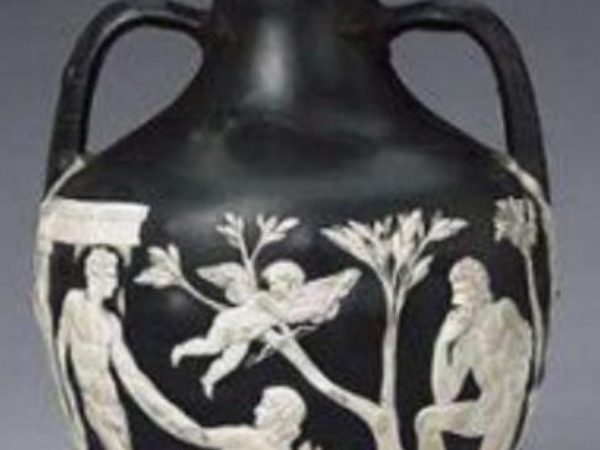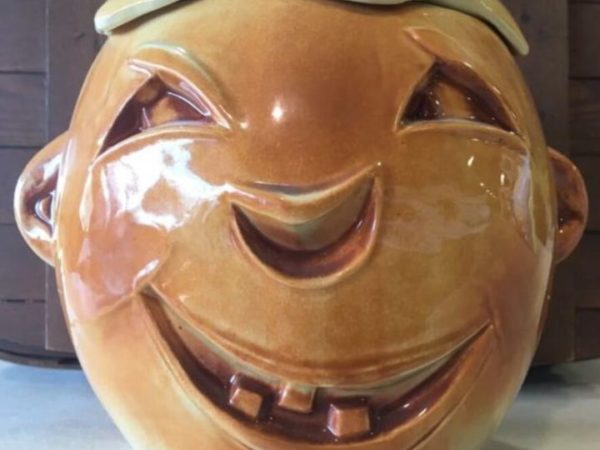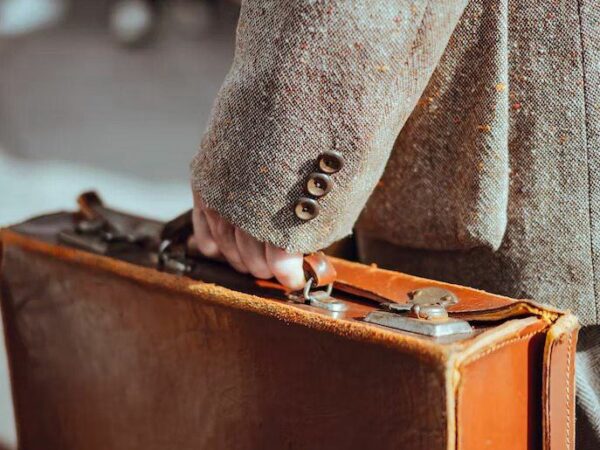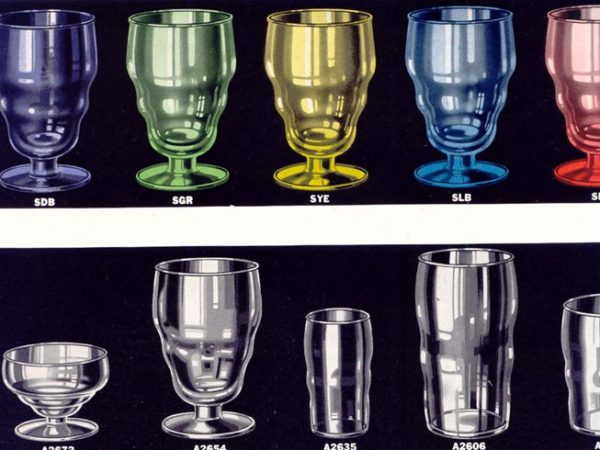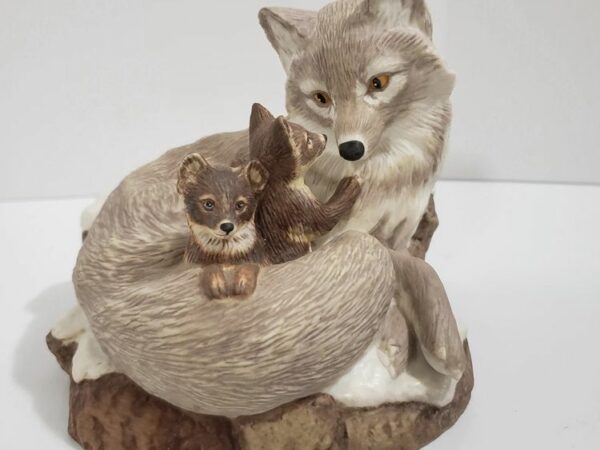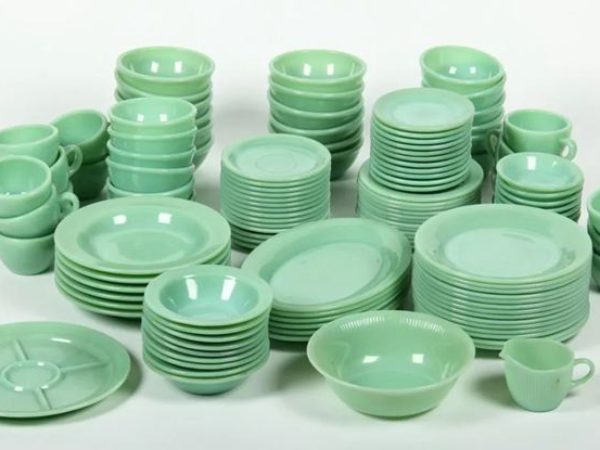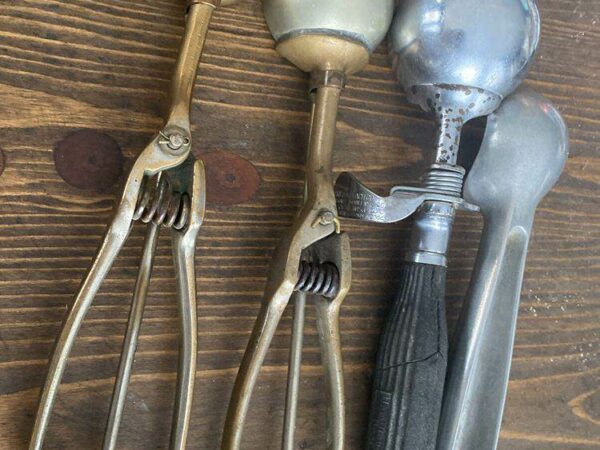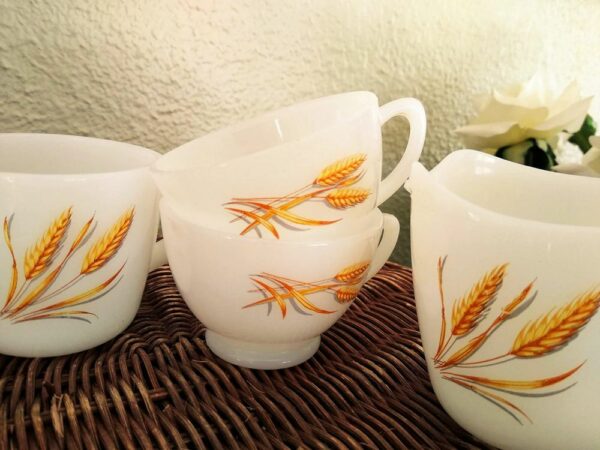Collecting antique pieces like old glass Clorox bottles is fun. Asides from being a hobby, it can fetch you a few bucks.
Even more satisfying is that as a collector, we’ll provide you with all the necessary information you need on your quest to collect these historical pieces.
Clorox bottles have been around for almost a century, witnessed the 2 World Wars, and have passed the test of time in flying colors. They sell for as low as $5 and go as high as $41.
Although glass bottles are currently not in use as the Clorox company permanently switched to using plastic containers for its products, it doesn’t negate the fact that old Clorox bottles are a must-have for every die-hard collector
We’ve included every vital detail you need to make your search for old Clorox bottles seamless and productive.
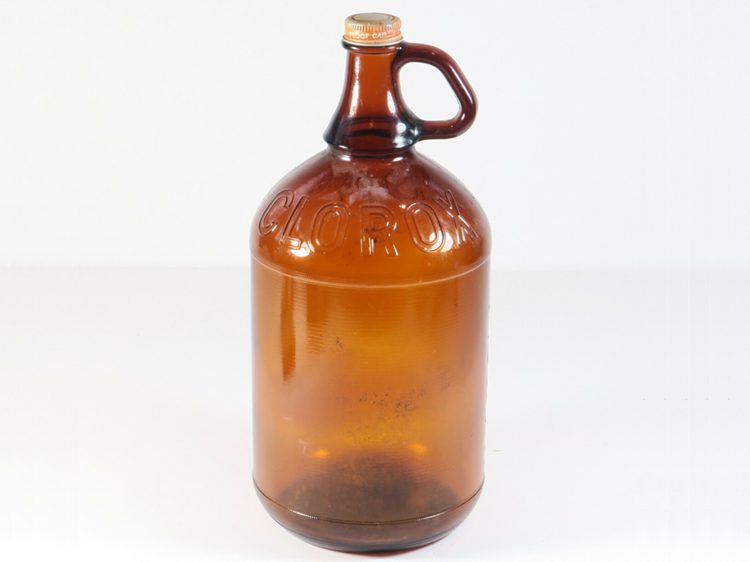
Table of Contents
A Brief History on Clorox Glass Bottle
The Clorox Company was created in 1913 by five entrepreneurs, Archibald Taft, Edward Hughes, Charles Husband, Rufus Myers, and William Hussy, in San Francisco, California. Although it was initially called the Electro-Alkaline Company.
The Electro-Alkaline company produced Clorox bleach for industrial use and large-scale businesses in San Francisco Bay, California. When bleach wasn’t a popular product. Indeed, these 5 friends set out to make all the difference.
Their target market included laundries, breweries, and large water companies. They delivered goods to their customers via Horses and wagons due to the size of their bottles and the quantity they supplied.
In 1928, after a threatened liquidation, new management came on board, the company fully rebranded, went public, and changed its name to the Clorox Chemical Company.
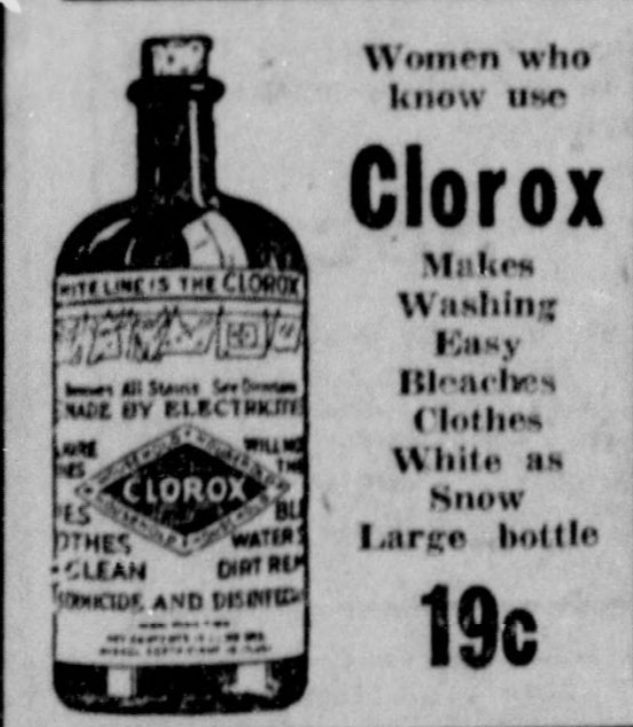
Clorox gets its name from chlorine and sodium Hydroxide, the two active constituents used to make the product. The logo: a Diamond has been in use for over 100 years and even to date.
In 1957, Procter and Gamble acquired the Clorox Chemical Company. They switched to plastic containers to carry their products. The company is still very active in California and owns subsidiaries like Burt’s Bees, Brita, Fresh Step Cat Litter, and Glad (storage bags, trash bags).
10 Most Valuable Glass Clorox Bottles in the World Today
These prices are from online antique stores, old bottling companies, and individual collectors. However, prices may vary due to the preferences of vendors.
No. |
Year |
Prices |
1 |
1930 |
$41.53 |
2 |
1937 |
$38 |
3 |
1945 |
$27.50 |
4 |
1958-59 |
$24.95 |
5 |
1943-44 |
$24.57 |
6 |
1928 |
$24 |
7 |
1933-36 |
$18 |
8 |
1932 |
$14.99 |
9 |
1939 |
$13 |
10 |
1938 |
$10 |
1. Date: 1930 $41.53
When you flip this 1930 bottle, you’ll find a diamond trademark and the CLOROX REG logo at its base. A 39 symbol stands beside a triangle embossed with IPC.
It has a rubber screw at the top and no inscription on the neck or heel like the other bottles on this list. This model retails for $41. Its age, history and rarity put it at the top of the list for the most valuable antique Clorox bottle in the world today.
2. Date: 1937 $38
The 1937 Clorox dark amber glass has pre-screw caps as the cork sealer. The model stands out with its unique color that not seen in other models.
The front, neck, and foot of the bottle has the word CLOROX embossed. It’s a 16oz pint bottle with a content fill line on the neck, the Clorox triangle logo on the bottom, and the words REG. U.S. PAT. OFF.
This unique bottle was manufactured in San Francisco, California, and retails for $38.
3. Date: 1945 $27.50
The Clorox bottle from this era has a grained texture on the shoulder and the heel, giving it a rough feel when touched. This feature adds to the aesthetic value of the bottle, portraying it as rugged and durable.
It sells for $27.50, a whole $10 difference from the 1937 model.
4. Date: 1958-1959 $24.95
From 1958-59 the Clorox chemical company only produced pint and quart bottles. This model had two outstanding features, A grained texture on the lower part of the bottle and its shoulder.
The neck style is a long and ribbed version giving room for less spillage and more safety for the bottle contents. The price of the bottle stands at $24.95.
5. Date: 1943-1944 $24.57
The Clorox company only manufactured pint, quart, and half-gallon bottles for this year. The bottle had solid CLOROX lettering on their necks and base. A content indicator showing sizes of the bottles- 15oz, 32oz, and half-gallon at the bottleneck.
The size of their mouth increased to 2-12/16 inches wide, and they have handles wide enough to fit just one finger. The bottle retails for $24.57.
6. Date: 1928 $24
By 1928, the Clorox chemical company introduced its pint bottles suitable for household use. A switch from the initial industrial use intent. This model is over 90 years old and very rare. They cost $24 at retail stores.
7. Date: 1933-1936 $18
From 1933 to 1936, Clorox bottles came with content indicators. You can determine the size of the content inside each bottle simply by looking at the body.
Additional solid lettering stands boldly on the shoulder and heel of the bottle, an improvement from the bland bottles the company initially manufactured. They sell for $18.
8. Date: 1932 $14.99
This 1932 Clorox bottle has solid lettering on the body compared to the 1931 bottle with just the CLOROX name and Diamond logo at the base.
This model retails for $14.99 in online antique stores.
9. Date: 1939 $13
The Clorox bottles made in 1939 had changes in the neck styles compared to other models. The necks were not as long and thin as the previous 1938 and 1937 models.
A finger ring wide enough for just one finger is attached to the Half-Gallon size bottle for easy carriage. They also came in 16oz size and retail for $13.
10. Date: 1938 $10
The only significant feature of the 1938 Clorox bottle is the width of the bottleneck. The neck area widens to 3-4/16” around. Since they had no finger ring by the side, the width of this neck makes it easy to lift and carry.
They sell for just $10 and only came in 32oz size.
The Evolution of Clorox Bottles
As the years progressed the Clorox company adopted different designs. Let’s take a look through the history of the designs of each era and how they are different from the era before and after it.
The earliest bottles
The first set of bottles containing Clorox liquid bleach came in five-gallon jugs. They were specifically made for heavy and industrial use and supplied to laundry marts, breweries, bleachers, and large water companies.
In 1918, the Electro-Alkaline company made the 15-ounce amber glass pint bottles fit for household use in America. Many other companies imitated the Clorox bottle design. Hence, it became difficult for people to identify Clorox bottles without paper labels.
By 1928, the Clorox chemical company went through a complete reconstruction and introduced various dimensions to their bottles. It became easy for people to identify each Clorox bottles and their production dates.
Cork Top Glass Clorox Bottles (1929-1930)
1929 to 1930 saw the Clorox Chemical Company making rubber cork top bottles with the Clorox diamond trademark on the bottom part. The rubber corks had the word CLOROX boldly inscribed on them.There was no other inscription on their bodies and they also came in simple shapes, like every random bottle.
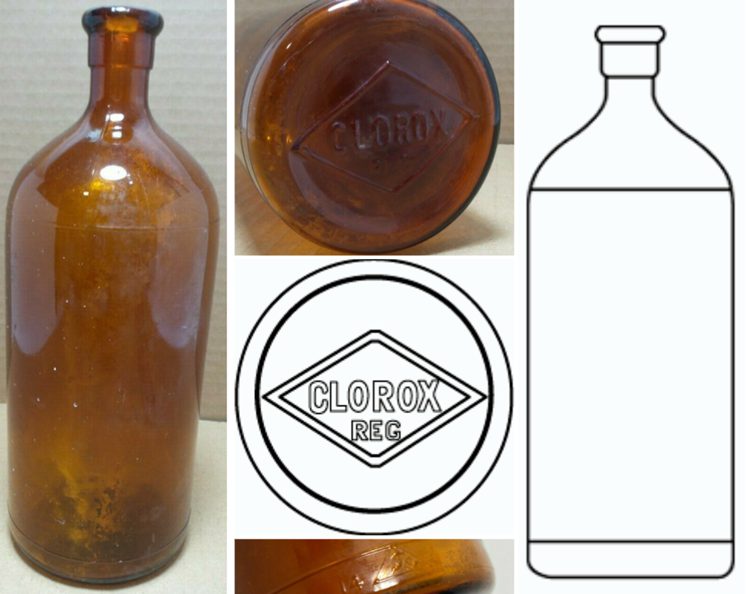
When you flip this 1930 bottle, you’ll find a diamond trademark and the CLOROX REG logo at its base. A 39 symbol stands beside a triangle embossed with IPC.
It has a rubber screw at the top and no inscription on the neck or heel like the other bottles on this list. This model retails for $41.53. Its age, history and rarity put it at the top of the list for the most valuable antique Clorox bottle in the world today.
Cork Top Glass Clorox Bottles with Solid Lettered Bottles (1931-1939)
The 1931-1932 models had solid letterings on the neck, heel, and shoulder. The Clorox name is also seen inscribed on the bottle’s neck.
1931 Clorox Bottle $9.95
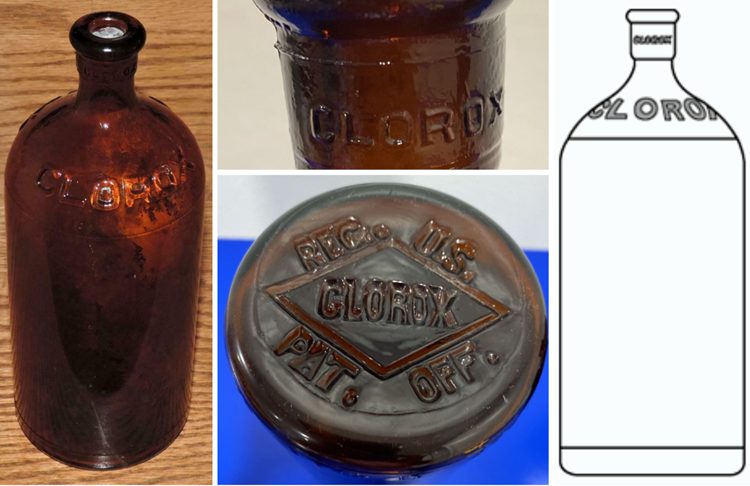
This 1931 Clorox bottle has solid lettering on the neck and shoulder compared to the 1930 bottle.
This model retails for $9.95 in online antique stores.
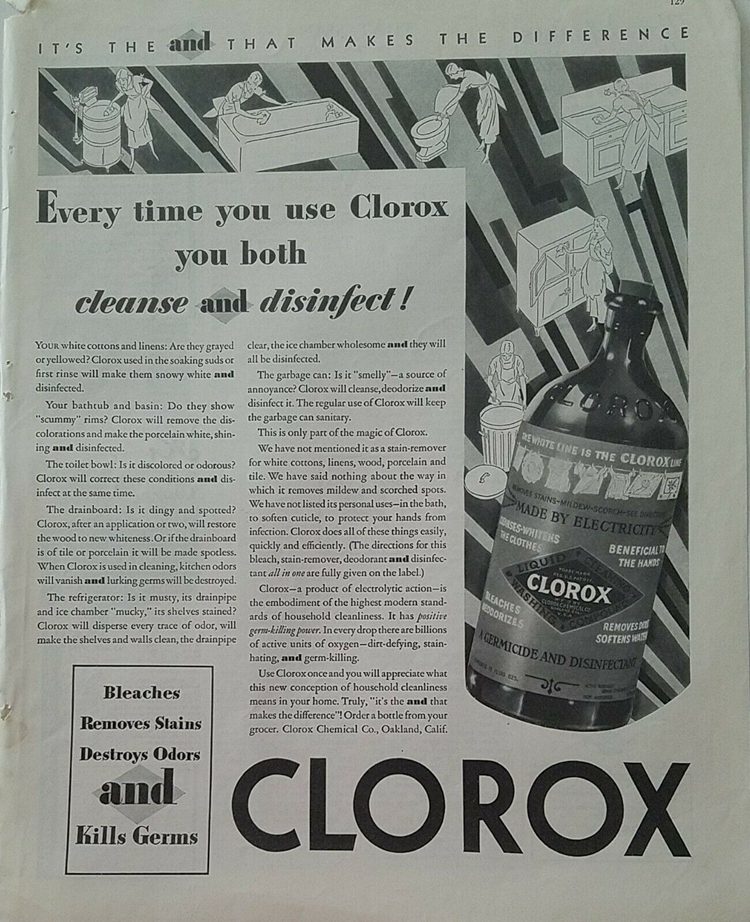
1932 Clorox Bottle $22.79
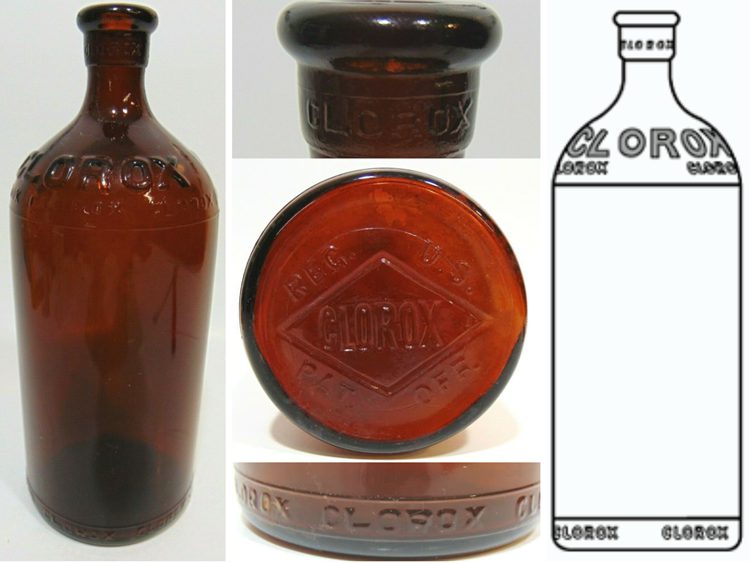
Additional solid lettering on shoulder and heel.
1933-1936 Clorox Bottle $19.75
By 1933-1936, each Clorox bottle made had content identification on their bodies.
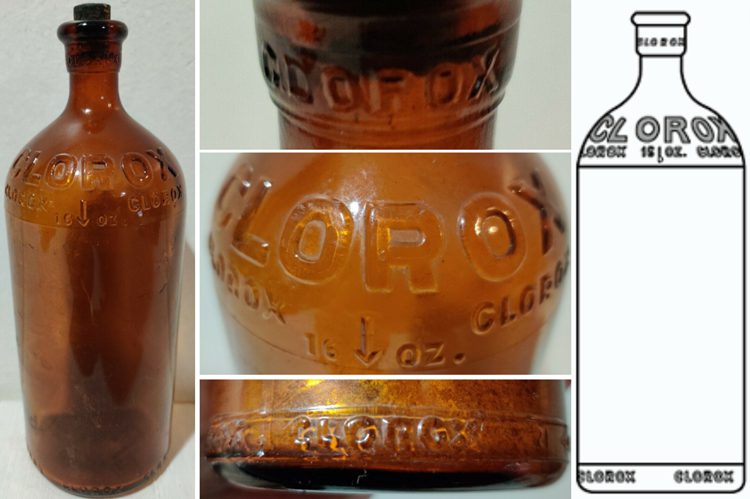
From 1933 to 1936, Clorox bottles came with content indicators. You can determine the size of the content inside each bottle simply by looking at the body.
Additional solid lettering stands boldly on the shoulder and heel of the bottle, an improvement from the bland bottles the company initially manufactured. They sell for $19.75.
1937 Clorox Bottle $10
By 1937, the section of fill line appeared right under content identification.
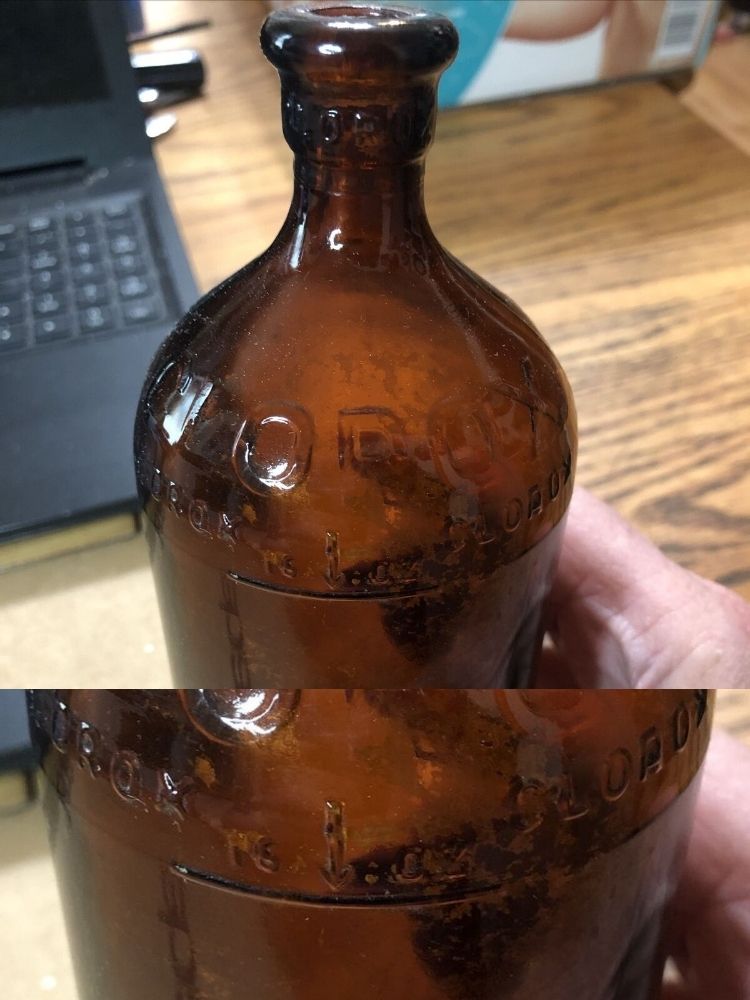
Section of fill line raised under content identification.
The 1937 Clorox dark amber glass has pre-screw caps as the cork sealer. The model stands out with its unique color that not seen in other models.
The front, neck, and foot of the bottle has the word CLOROX embossed. It’s a 16oz pint bottle with a content fill line on the neck, the Clorox triangle logo on the bottom, and the words REG. U.S. PAT. OFF.
1938 Clorox Bottle $14.9
In 1938, a change came in the neck area of these bottles. They got wider up to 3-4/16 inches around.
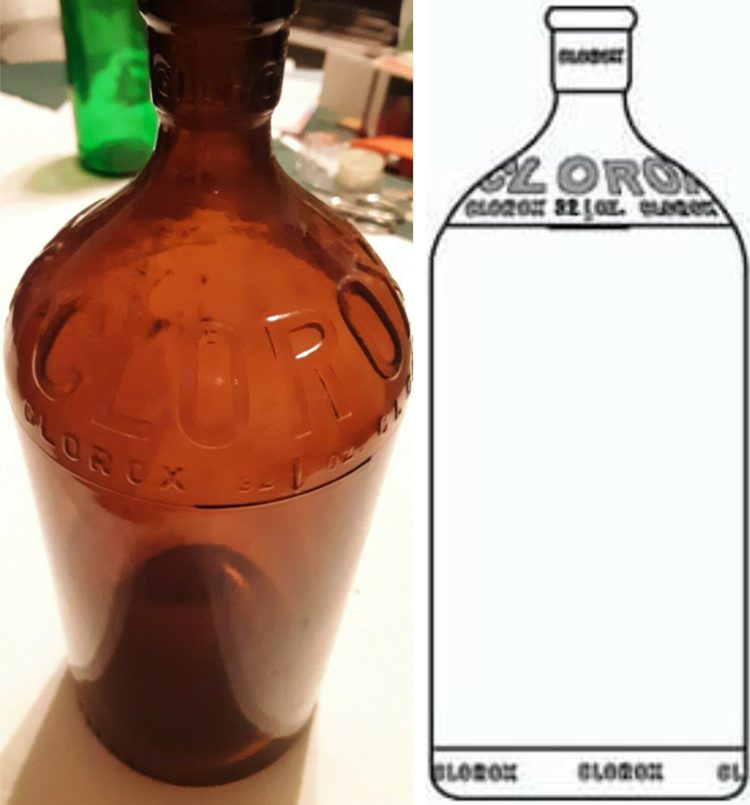
The only significant feature of the 1938 Clorox bottle is the width of the bottleneck. The neck area widens to 3-4/16” around. Since they had no finger ring by the side, the width of this neck makes it easy to lift and carry.
They sell for just $14.9 and only came in 32oz size.
1939 Clorox Bottle $13
By 1939, the half-gallon size came with a finger ring handle for easy carriage.
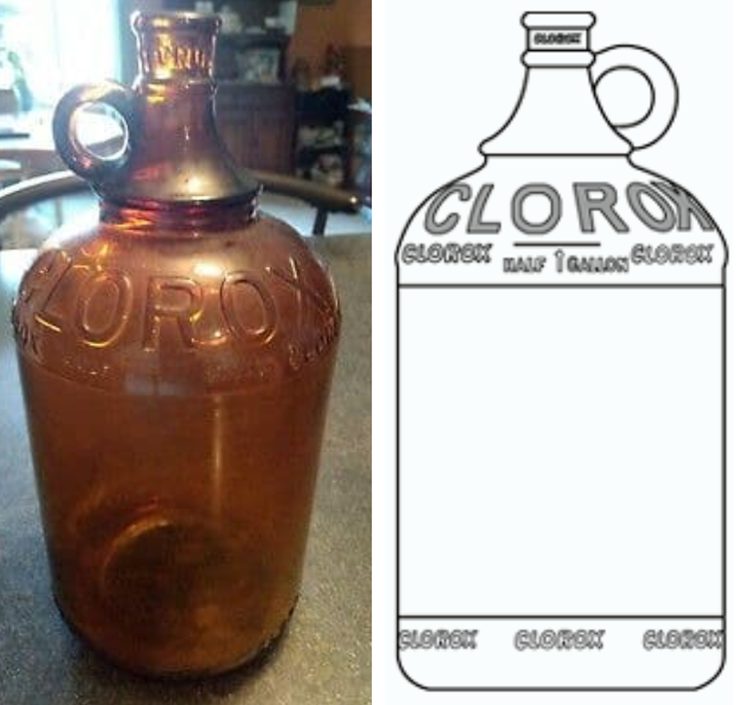
The Clorox bottles made in 1939 had changes in the neck styles compared to other models. The necks were not as long and thin as the previous 1938 and 1937 models.
A finger ring wide enough for just one finger is attached to the Half-Gallon size bottle for easy carriage. They also came in 16oz size and retail for $13.
Screw-top Glass Clorox Bottles (1940-1960)
Clorox bottles from the 1940s had a pint, quart, and half-gallon. They had laced necks for screw tops. These screw tops replaced the rubber cork tops on earlier models.
1940-1942 Pint, Quart and Half Gallon Bottles
Content identification moves to side. Threaded neck appears. Pint and quart size mouths measure 2-7/16″ around.
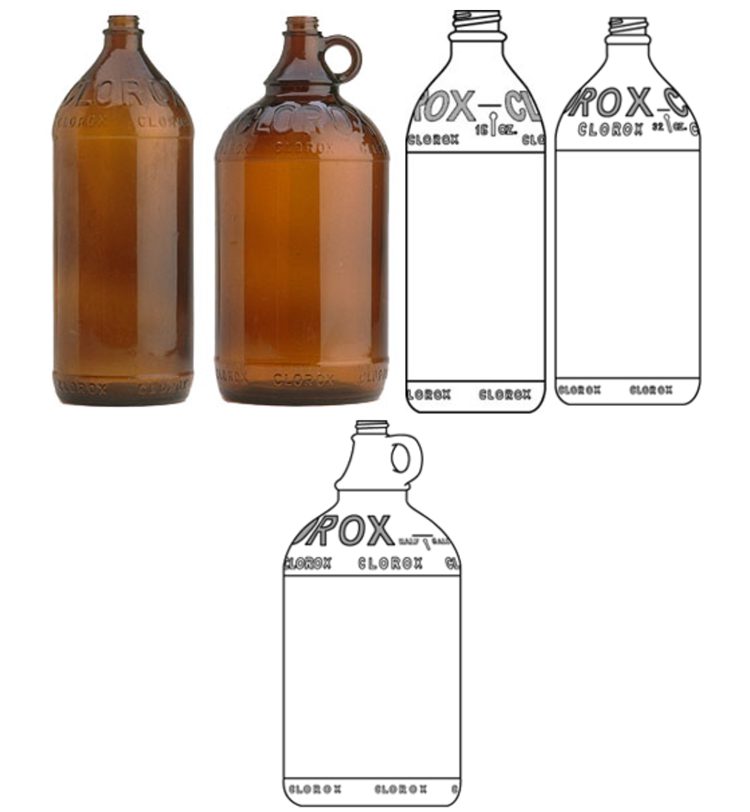
1940- 1942 Vintage Clorox Brown Bottle 16 oz $10.42
1940- 1942 Vintage Clorox Brown Bottle 32 oz $19.99
1940- 1942 Vintage Clorox Brown Bottle 64 oz $29.99
1943–1944 Pint, Quart and Half Gallon Bottles
Pint and quart size mouths increase to 2-12/16″ around.
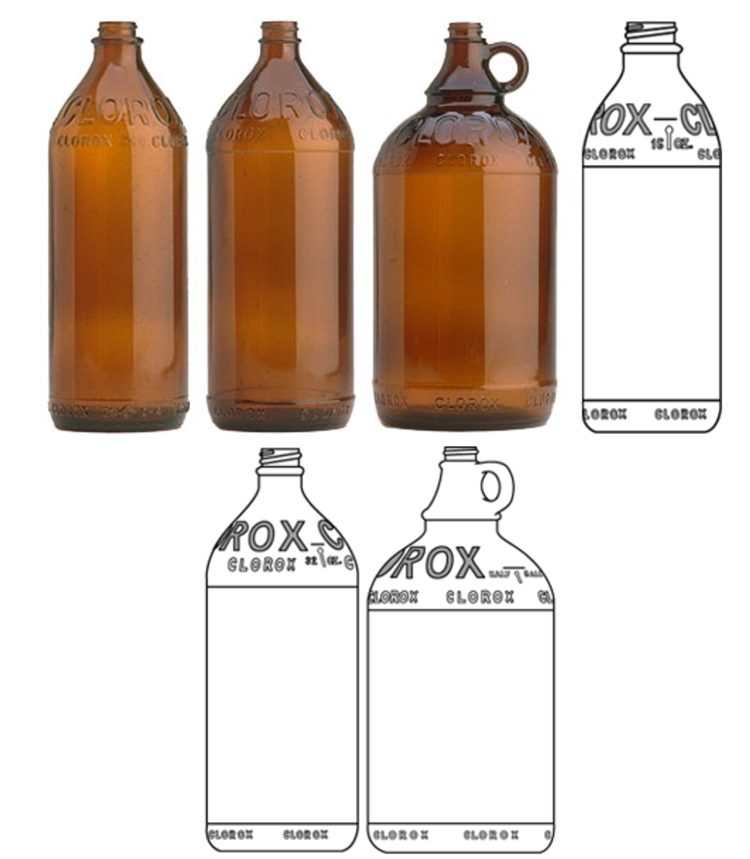
1943- 1944 Vintage Clorox Brown Bottle 16 oz $12.29
1943- 1944 Vintage Clorox Brown Bottle 32 oz $4.99
1945 Pint, Quart, Half Gallon and Gallon Bottles
By 1945, the company added the grained texture on the shoulder and heel of the bottle. The gallon size also came with a finger ring handle.
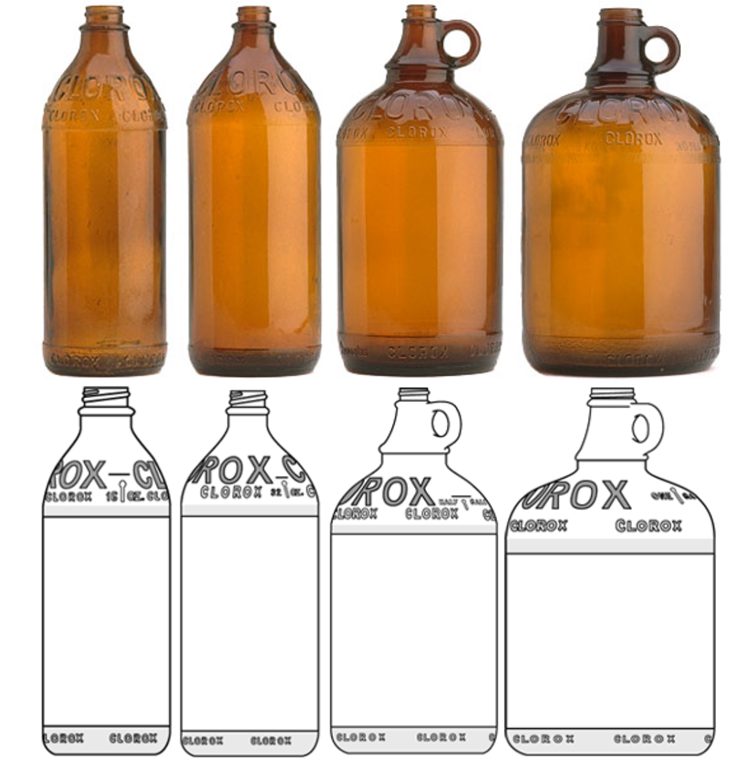
Outline letters, used 1951 to 1962
1951–1954 Pint, Quart, Half Gallon and Gallon Bottles
One popular feature of the Clorox bottles made in this era was a change in the lettering style. From 1951-54, the solid letters got softer. The outline lettering technique replaced it, and the grained texture extends down the label panel.
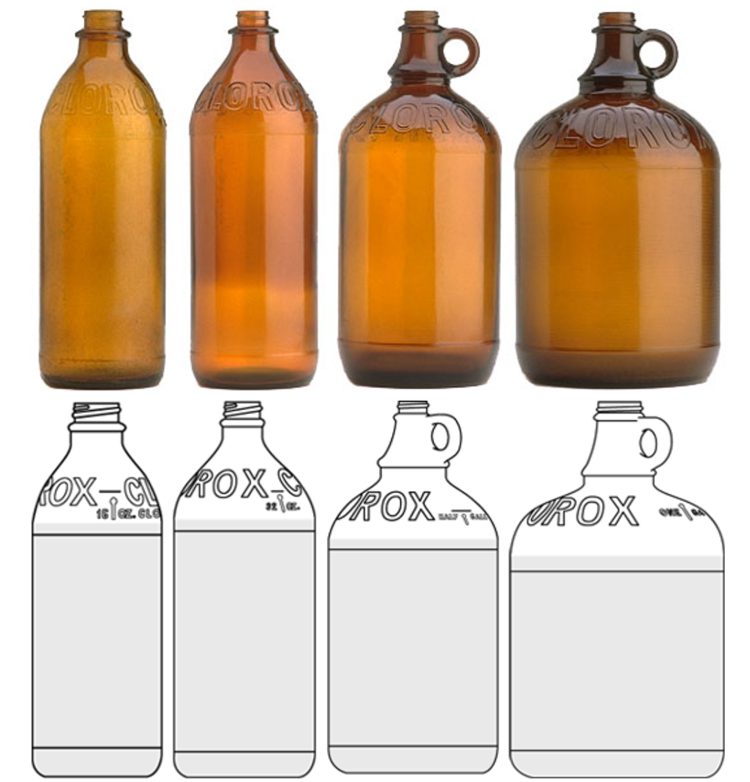
1955–1959 Pint, Quart, Half Gallon and Gallon Bottles
The 1955-1959 model featured a finger ring handle on the gallon and a half-gallon bottle wide enough to hold two fingers, an improvement from previous models.
The company replaced the side content identification with a raised fill line. These models had fewer imprints on their bodies.
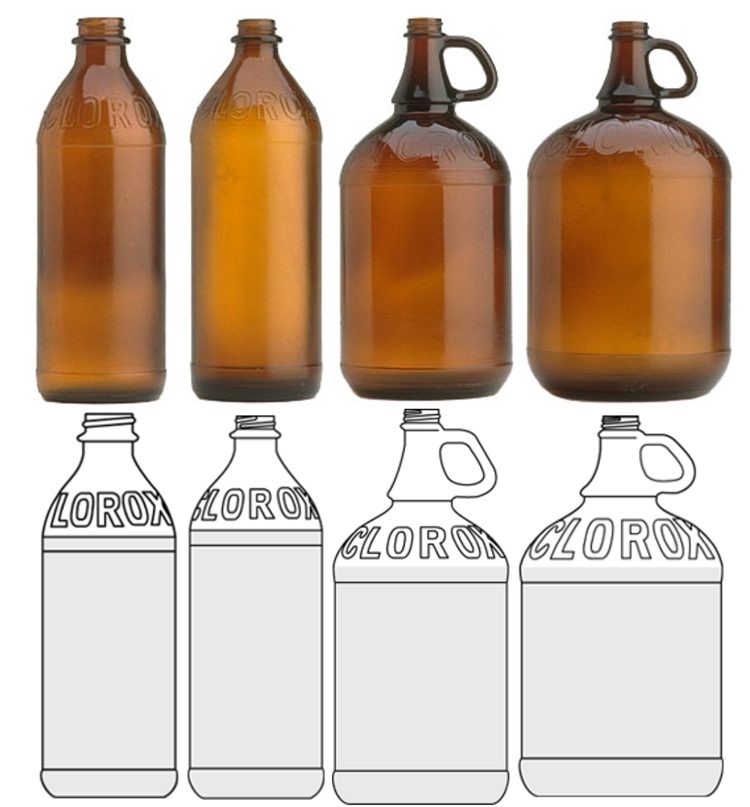
1959–1962 Pint, Quart, Half Gallon, and Gallon Bottles
From 1959 to 1962, the neck style of the bottles changed into a long and more ribbed structure with a more streamlined bulb-shaped body on the pint and quart-sized bottles. The finger ring on the gallon and half-gallon bottle got wider, wide enough for four fingers to fit in.
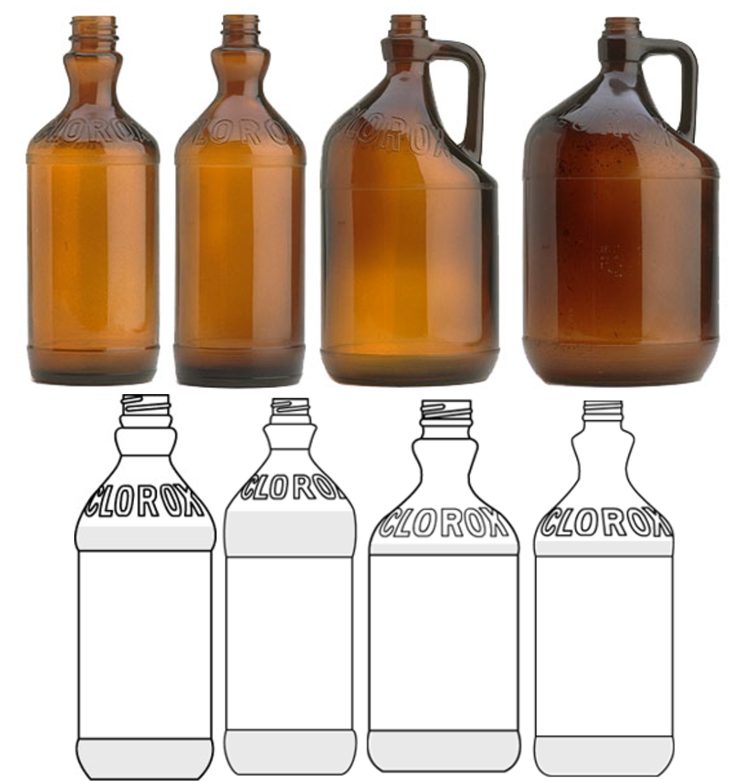
The odd ones
Like every company, the Clorox Company had its fair share of trial and error with some models. The odd styles didn’t get widely distributed, as they failed to meet the packaging requirements.
However, samples of these bottles were still delivered to some stores and markets to survey and test responses. The company used two bottles specifically for this purpose, 1960 half-pint and 1957-quart bottles.
How to determine the value of an old clorox bottle
You don’t need to be an expert to know the value of your old Clorox bottle, follow the guidelines we’ve listed below, and you’re good to go.
Determine the age of the bottle
Although not in all cases, the older a bottle is, the more likely it will sell for a higher price. Older models are few in circulation. Acquiring one or a few on your shelf means a ton of hard work and research has gone into collecting it.
Color of the bottle
Rare and unique colors are higher in demand than random colors. Since they are antique pieces, a worthy, remarkable, and significant bottle will attract more interest.
Condition of the bottle
The condition of your bottle increases its value. An old Clorox bottle with parts still completely intact will attract better offers from buyers.
Look out for cracks, chips, and any physical defect that may affect the overall appearance of your antique bottle.
How To Date an Old Glass Clorox Bottle
Here’s how to date an old glass Clorox bottle like a boss. Dating these bottles doesn’t involve any serious technicality or require any special skill.
Embossed Markings
From the solid lettering style in the 1940s. To the outlined design in the 1950s. Each bottle and the manufacture year had distinct lettering patterns on their bodies.
Observe the body of your antique bottle thoroughly by paying attention to the underside to determine the date on which they produced the bottle.
Bottle Shapes and Morphology
As the years rolled in and out, the bottles added one or two additional features to its body. A perfect example is the inclusion of finger rings to fit 1, 2, 3, and 4 fingers on the bodies of these bottles to aid easy carriage.
Some neck styles were also peculiar to specific years in making glass Clorox bottles.
FAQs
- Where can I sell Old Clorox Bottles?
- You can sell your old Clorox bottles to art shops, flea markets, bottling companies, and even recycling plants. You can recycle these bottles into more environmentally friendly products.
- What can Old Clorox Bottles be used for?
- Your Clorox bottles can get handy in the decorative department. They make excellent flower and plant vases. You can also use them as storage equipment for grains or objects
- How do I know if my Clorox Bottle is Valuable?
- Use the identification guide above to get the necessary information regarding the year and price of Clorox bottles. If your collectible cuts, then luck has smiled on you.
- When was the brown Clorox bottle made?
- The brown Clorox bottle was manufactured in 1937. This is one of the most popular Clorox bottles ever made. The bottles had a section of fill indicator on their bodies.
Parting Words
From dating to identifying and evaluating your old Clorox bottles, this article is your ultimate guide to a great experience. Look out for imitations as several other companies imitated the Clorox styles. Here are some points to remember.
- Check the underside of your collectible to identify the manufacture year.
- These bottles come in four sizes. The gallon, half-gallon, pint, and quart sizes.
- Not all sizes from a specific year have the same features. For example, the 1940s model came in gallon, pint, and quart bottles, but only the 1945 model had a finger-ring.
